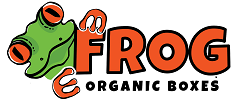 Loading... Please wait...
Loading... Please wait...Categories
Chemical Free Versus Local Grown Produce
Posted on 24th Apr 2019
So here we all are, trying to make a difference...
There are so many ways to live a sustainable life, but when faced with choices how do we know which way is better?
Let’s talk about ‘locally grown produce’ versus ‘chemical free produce’ (which may or may not be grown locally).
Food with low food miles is high on the agenda for many of us. We spot the words 'Local Grown' and instinctively give that food a big tick of approval, but one thing many people fail to ask is ‘HOW is it grown?’
I just had an interesting conversation with one of our local organic growers. He was born into a QLD farming family, initially growing conventional produce, but years later, when his health, and the health of his wife started to decline dramatically he took a step back to look at what might be causing those issues. He puts it down to the chemicals they were exposed to when farming conventionally. Since then he’s become a passionate advocate for organics and like many other organic growers, he is very concerned about the way conventional produce is grown.
He told me about an alarming observation he made recently, what’s worse it wasn’t a one off event. As he drove past a field of sweet potatoes, he saw it was being sprayed by what he assumed was fertilizer. However the following day he passed by and to his dismay all the green foliage above ground was dead. A day later those sweet potatoes were being harvested! Although there is no way to know for sure, from his observations, the chemical being sprayed may possibly have been Gromoxin (Paraquat)- a total knock-down weed spray- it’s banned in 32 countries, highly toxic, water-fast, and is partially in-activated when it makes contact with the soil (note the word partially!).
For arguments sake, there is an organic approved, food- safe alternative called Pelargonic acid, which works by killing only the foliage of a plant, however it is incredibly expensive so although it is a safe method used in organic farming it is usually only used to spot treat weeds, as no farmer would ever consider spraying an entire field with it given the costs involved.
Whilst this is just an anecdotal story which you may choose to believe- or not, and whether the spray used was in fact Gromoxin or another chemical producing the same results, it’s an important reminder that we need to stay aware and informed when choosing our produce, regardless of how close to home it comes from.
We may live in what we consider to be a pristine part of the world, and we may think that in our civilized country there are enough safe-guards in place to protect us from bad practices such as these. But the sad truth is there isn’t. When it comes to conventionally grown food you have absolutely no way to know how it was farmed, and as farmers now have the ability to self-assess themselves in regards to how they operate, there is no governing authority making sure everyone stays within the safety guidelines on a day to day basis.
Gromoxin isn’t banned in Australia, so until a world-wide ban comes into place, or Australia chooses to follow suit with the other 32 countries it is banned in, you may unknowingly be eating food sprayed with it, or other toxic chemicals. It’s up to you to be conscious of what you chose to eat. Regardless of whether that food is grown locally or not, if it’s conventionally grown you are still being exposed to toxic chemicals and that is the most important thing to be aware of.
At FROG we’re doing our best to supply you with chemical free food that is grown locally. We have exciting hopes and dreams for the future, where we can supply more food grown close to home, but our first main focus will always be to supply food that you can be sure is 100% chemical free.
We reckon protecting our health is worth adding a few extra food miles for this assurance, and hope you do too.
Yours in health,
Celine
